#Cleveland V8
Explore tagged Tumblr posts
Text




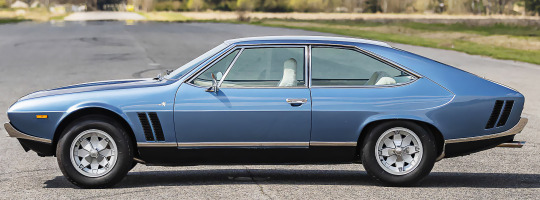
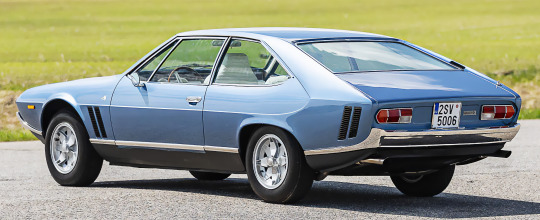
Iso Rivolta Lele, 1972. A restored, Cleveland V8-engined Iso is for sale by auction on Car & Classic. The car offered is the 9th of 285 Lele's built by Iso and features a corduroy-trimmed interior which was a factory option. The Lele was designed by Marcello Gandini at Bertone as a 4-seat grand tourer to compete with the Lamborghini Espada (also designed by Gandini). The car has travelled 52,828 kms and is in the Czech Republic.
auction listing
#Iso#Iso Rivolta#Iso Rivolta Lele#Bertone#Marcello Gandini#1972#Ford V8#Cleveland V8#351ci V8#grand tourer#cars for sale#auction#car & classic#corduroy#corduroy trim#1970s#dead brands
202 notes
·
View notes
Photo
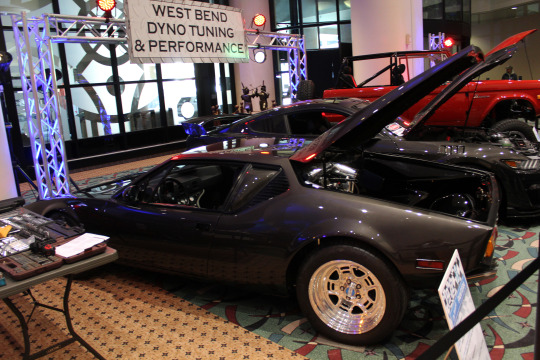
De Tomaso Pantera at the Greater Milwaukee Autoshow (2023) in Milwaukee, WI.
#detomaso#de tomaso#pantera#pantera gt5#pantera gt5-s#gt5#gt5-s#coupe#targa#ford#302 v8#v8#cleveland v8#windsor v8#mangusta#pantera l#pantera gts#pantera 90 si#pantera gts group 3#pantera gts group 4#vallelunga#de tomaso pantera#de tomaso vallelunga#de tomaso mangusta#guara#de tomaso guara#de tomaso bigua#bigua#de tomaso p72#p72
50 notes
·
View notes
Photo
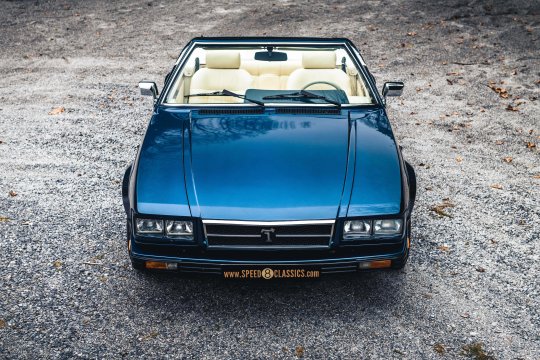

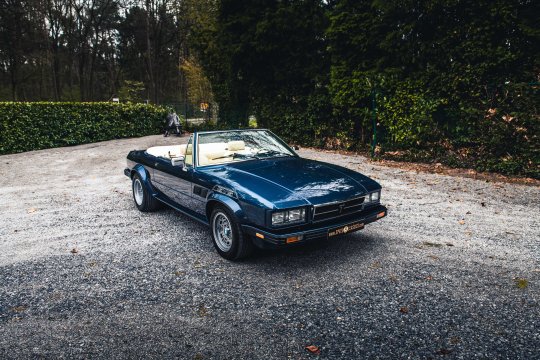


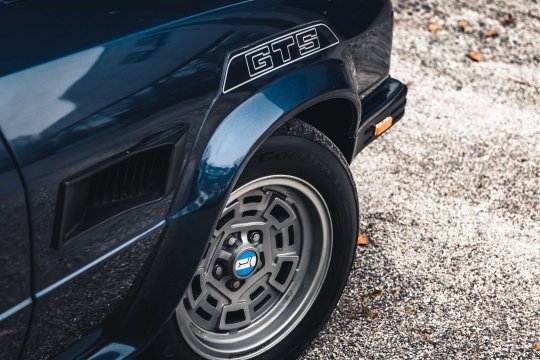
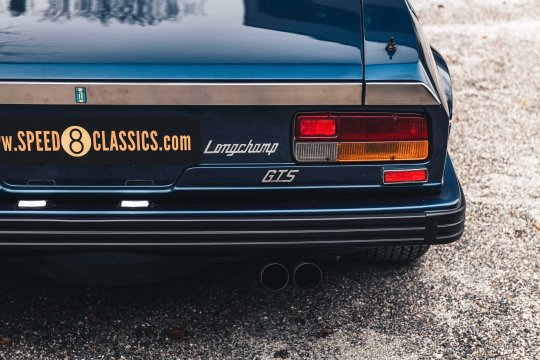

De Tomaso Longchamp GTS Spyder
Extremely rare Longchamp Spyder fitted from new with the manual ZF 5 speed gearbox. De Tomaso built 17 Longchamp Spyders and only a few of those were delivered as manuals, the majority received Ford automatic gearboxes. Engine is a 351cu (5.8L) Ford Cleveland V8 engine and is matching. The car also wears correct rosso paintwork and its original Campagnolo wheels.
75 notes
·
View notes
Text

The XA Ford Falcon GT was released in March 1972 and ceased production in September 1973, and was the first Falcon GT to be available in a two door coupe. The XA was the first Australian built Falcon not to be based on a American design, and was almost completely designed in Australia. The XA Hardtop became the more preferred option to be used in Australian Touring Car Racing due to it's larger rear wheel arches for wider racing tyres. The XA GT Hardtop went on to achieve back to back wins at Bathurst with Allan Moffat and Ian Geoghegan in the 1973 Hardie-Ferodo 1000, and the 1974 Hardie-Ferodo 1000 with John Goss and Kevin Bartlett.Total produced: 1,868 Sedans and 891 Hardtops.Engine: 5766cc Cleveland V8 with overhead valvesCompression Ratio: 11.0:1Fuel System: Ford Autolite '4300' 605cfm 4 barrel downdraught carburettorPower / Torque: 224kW (300bhp} @ 5400rpm, 513Nm (380Ib-ft} @ 3400rpmTransmission: Four-speed manual, three-speed FMX automaticRear Axle: 9in removable carrier type, Limited Slip 'traction lock' Diff, 28 splineSuspension: Independent with coil springs, telescopic shock absorbers and anti-roll bar (front) Live axle with semi-elliptic springs, telescopic shock absorbers and anti-roll bar (rear)Brakes: Disc front 286mm (11.25in) Drum rear 254mm (10in) power assisted.Wheels:14 x 6 Steel - Argent painted Steel '12 Slot'.Tyres: ER70H14 RadialCurb weight estimated: 1585 kg / 3490 lbsPerformance: 0-100km: 7.2 seconds 0-400 metres: 15.4 seconds (manual sedan)Price when new for a 1973 XA Ford Falcon GT 5.8 Litre 351 V8 automatic two door Coupe: $6,648.00.
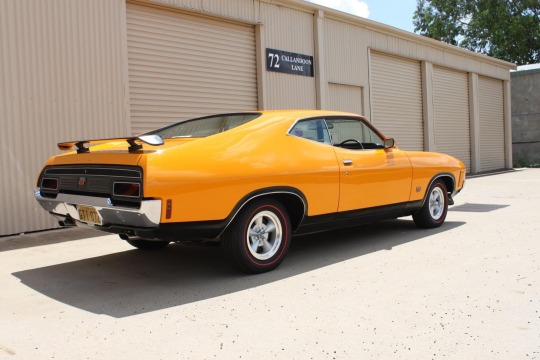
411 notes
·
View notes
Text

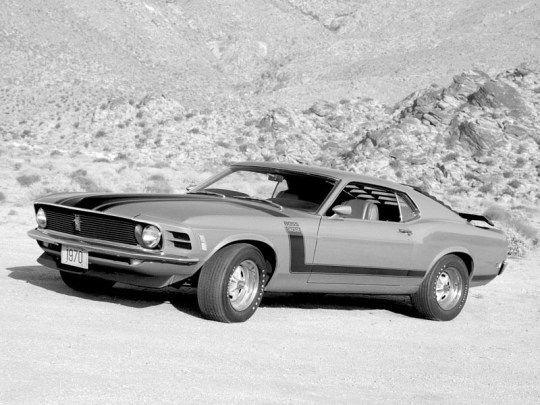
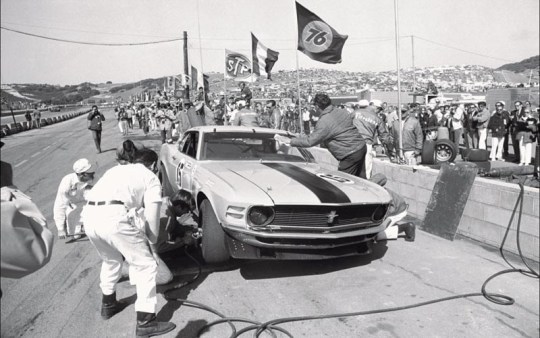
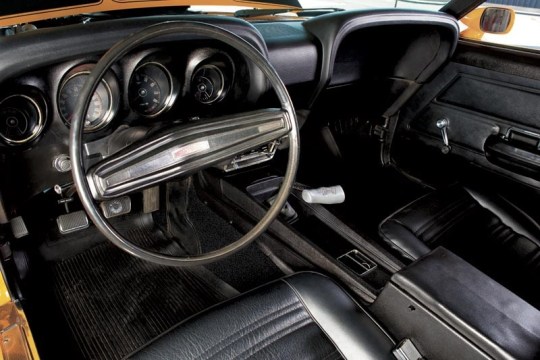
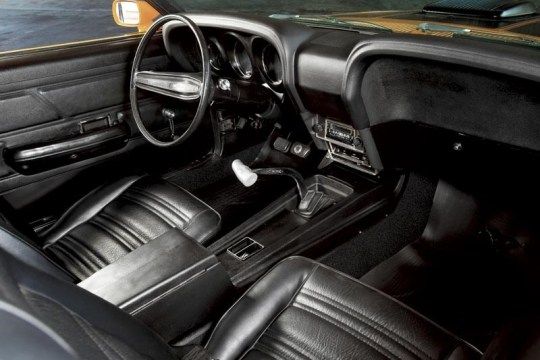
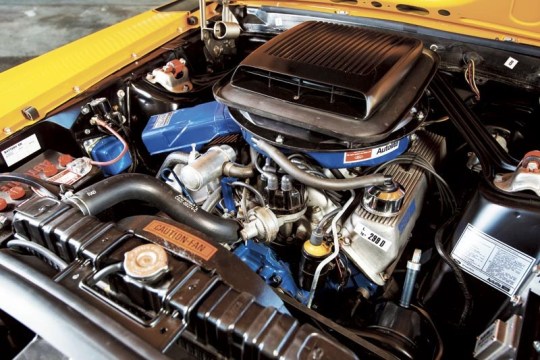


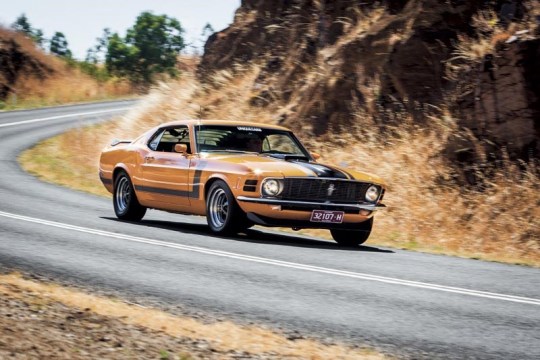
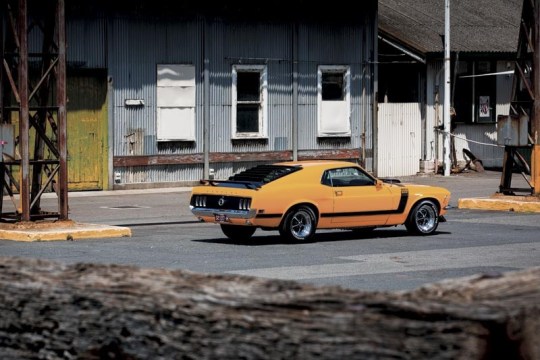
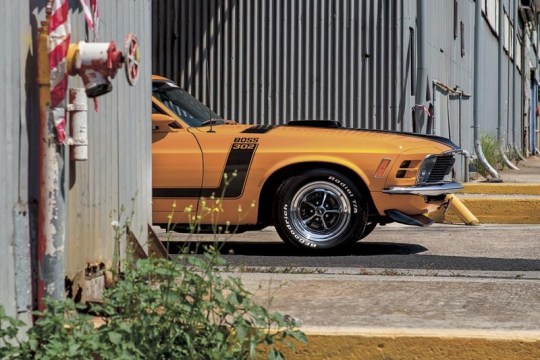
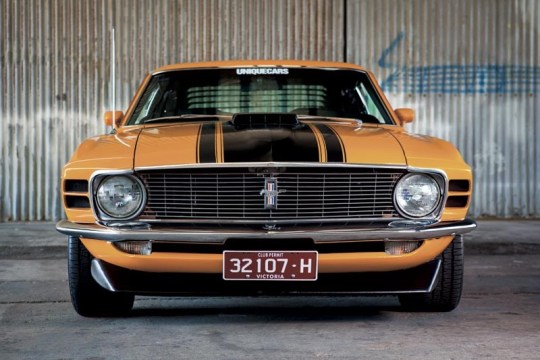
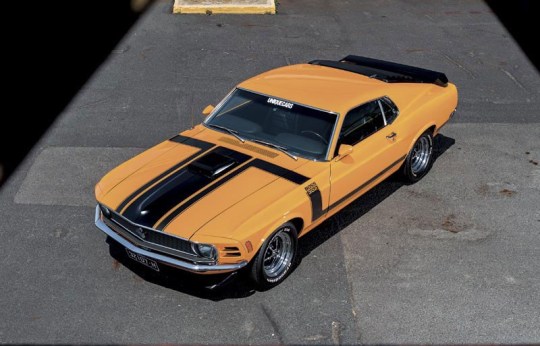
FORD MUSTANG BOSS 302
BOSS-A-NOVA!
They called it The Boss and for two short years it ruled the muscle car scene in the US, establishing itself as one of the greatest road and race cars of the era. Now, it’s one of the most collectible.
In 1960s US street lingo, if something was ‘boss’ it was cool, tough, the best. And the 1969 Boss 302 Mustang wore its badge with pride. It launched just four and a half years after the first Mustang was revealed to critical acclaim and record sales. Yearly updates to keep Mustang fresh in the face of tough new challengers from General Motors and Chrysler (particularly the Camaro) resulted in the once lean and pretty ’Stang muscling up, both in body shape and under-bonnet brawn, and the 1969-70 Boss models were the zenith of Mustang styling.
Thereafter, Mustangs became increasingly bloated and anaemic as the 1970s fuel crisis and stricter pollution laws cut horsepower and stylists lost their way; the rippling flanks and thrusting nose of the late 60s/early 70s cars gave way to boxy, bland designs. That early look would not be recaptured until 2005, when new Mustangs were given retro styling.
The Boss 302 was launched at the same time as its big-block brother, the Boss 429. Both were positioned as competition specials; Ford wanted to homologate its 302-cuber for Trans-Am and the 429ci monster for NASCAR. In fact, Ford went wild with engines between 1969-70, offering nine V8s – the ‘economy’ 302, 351 Windsor, 351 Cleveland, 390, 428 Cobra Jet, 428 Super Cobra Jet, 429 ‘wedge’, Boss 302 and Boss 429.
For the Boss 302, Ford’s high-compression 302ci small-block V8 was beefed up with four-bolt main bearing caps and redesigned ‘Cleveland’ cylinder heads with bigger inlet and exhaust valves, and ports that allowed the engine to breathe more efficiently.
These ‘semi-hemi’ heads were based on the Ford 427ci racing engine’s combustion chambers, and a balanced forged steel crankshaft and forged steel conrods allowed the engine to handle high rpms for sustained periods. A single 780cfm four-barrel Holley carburettor sat atop a high-rise aluminium inlet manifold, while a dual-point distributor, high-pressure oil pump, windage tray and screw-in welch plugs were further indications of its competition intent.
A rev limiter was fitted, progressively cutting spark from 5800rpm to 6150, but it was easily bypassed and the Boss 302 could reportedly keep making power up to 8000rpm with minor mods. In the muscle car marketing war, Ford claimed a peak horsepower figure of 290bhp at 5800rpm (the same as the Camaro Z/28), but that was extremely conservative.
Two four-speed manual Top Loader transmissions were available: a wide-ratio ’box with Hurst shifter more suited to street and strip use, and a close-ratio unit for racing. Adding to the race or road options list were four diffs: the stock 3.5:1 nine-inch, Traction-Lok 3.5:1 and 3.91:1 and the No-Spin 4.30:1 built by Detroit Automotive. Axles and diff centres were also strengthened to take the loads.
Suspension was also race-inspired with heavy-duty springs, shocks and sway bar up front, and Hotchkiss-style rear suspension with heavy-duty leaf springs, sway bar and staggered shock absorbers. The left-hand shock absorber was bolted behind the axle and the right in front, to reduce axle tramp under acceleration. Amazingly for such a high-performance car, braking was still only discs and drums with power assistance.
Ironically, the Boss 302’s sexy shape was styled by former General Motors designer Larry Shinoda, who is often credited with coming up with the Boss moniker. When asked what he was working on, he replied, "The boss’s car", a reference to new Ford president ‘Bunkie’ Knudson, who was also ex-GM and had recruited Shinoda to Ford.
While the wheelbase remained unchanged at 2740mm, the ’69 Mustang was 96.5mm longer overall to accommodate all the V8s offered, although the big-blocks still had to be shoe-horned under the bonnet. Shinoda’s ’69 Boss 302 was also one of the first production cars to offer an optional front air dam and adjustable rear wing, and his use of high-contrast black panels, rear window SportsSlats, and go-faster stripes made the Boss a real attention-grabber. The ’69 was also the only quad-headlight Mustang, a feature that was dropped for 1970 models.
In 1970, American Hot Rod magazine dubbed the 1970 Boss 302 as "definitely the best handling car Ford has ever built", while the conservative Consumer Guide called it "uncomfortable at any speed over anything but the smoothest surface". Unique Cars resident Mustang maniac, ‘Uncle’ Phil Walker, never read the Consumer Guide review, but even if he had it wouldn’t have stopped him buying the immaculate 1970 Grabber Orange Boss 302 you see here.
Phil already has his beloved 1966 Shelby GT350H, but the Boss 302 really got his Mustang juices percolating. And he wasn’t alone, because the first Boss he saw, some 43 years ago, is still one of Australia’s most iconic race cars: Allan Moffat’s Trans-Am racer. Phil remembers it clearly.
"I saw Moff race it Calder and I was inspired to own one," Phil recalls. "It was the most aggressive-looking car; its stance was something you had to see to believe. It looked like it was doing a million miles per hour when it was parked.
"My Boss was originally a one-owner car and I bought it from a friend of mine in California, Dave, who I also bought my Shelby GT350H from 19 years ago. Dave found it in a barn with a blown engine, but in otherwise pretty good condition.
"The lady who owned it from new didn’t realise it had a high-compression engine and had run it on standard fuel. When it blew up she just parked it.
"Dave did a nut-and-bolt restoration over two years, then put it up on his hoist. He didn’t want to sell it, but I got my way in the end – unfortunately he had the last say on the price (laughs). I didn’t even bother to test drive it; I knew it was a good car. It had 21 (new) miles on the odo when I picked it up and only 54,000 miles in total."
Since then, Phil has only put a couple of hundred miles on the car, but that’s enough for him to have bonded with it.
"I’ve only had the Boss since January and it’s growing on me. It’s different to the Shelby. It’s bigger and very low.
"The engine is incredible. Dave is one of the best engine builders in California and when he rebuilt the 302 he changed the cam spec. US camshaft technology was okay in the 60s and 70s, but if you had a big-cam muscle car they wouldn’t idle and they were terrible for driving in cities.
"A proper Boss engine can rev to 8500rpm all day and for a V8 that’s pretty serious. But they’re not renowned for low-down torque; it starts coming on from 3500rpm. My car still has a solid-lifter cam, but it pulls like a train from 1200rpm in top gear and I can drive it around at 1500rpm in top all day.
"It’s got the four-speed close-ratio Top Loader with the long first gear and with a 3.7:1 rear end it does about 55-60mph (89-97km/h) in first gear. It bloody goes!"
Phil is a fussy bugger and his cars have to look just right, so Russell Stuckey from Stuckey Tyres has ordered him a set of genuine 15 x 8 Minilites from England to replace the standard Magnum 500s.
"I want it to look like the Parnelli Jones race car, and to get the stance I want it’s going to have 275/60s on the rear and 255/60s on the front. At the moment it’s a pretty car that is tough, but I want a tough car that looks tough. And that’s all I’m going to do to it."
After his first real fang in the Boss, Phil felt that his Shelby would be half a lap in front at the end of a 10-lap sprint at Sandown, but now thinks the Boss would be quicker. We might have to put both to the acid test one day. What do you mean "no way", Phil?
It was a nervous Phil who turned up at a Melbourne storage facility in January to pick up his new Boss 302. So nervous, in fact, that he took along Unique Cars art director Ange and a sturdy tow rope – just in case.
The storage people were even more apprehensive – they had been warned about just how anal he is with his cars, as he explains: "The lady there said, ‘You must be pretty fanatical because we’ve been given strict instructions that no one is to touch the car except you’." Fortunately, the car arrived in pristine condition.
"I was pretty excited, I’d been waiting for seven weeks," Phil laughs. "I took the car cover off it, fired it up, and it drove home like a brand new car. It was as good as I thought it would be. I spent the next three hours washing it."
Sounds like our Phil.
PARNELLI AND ME
Three years ago, my mate Dave and I were invited to a Trans-Am dinner at Portland International Raceway where Dave was racing his 1970 Trans-Am Boss 302 and I was crewing for him.
When we were driving there we noticed this black Mercedes following us. When we stopped it did too and this bloke got out and said, "I noticed you guys back at the hotel. You’re going to the Trans-Am dinner aren’t you? I’m lost." It was Parnelli Jones!
I jumped in with him and when we got there I ‘invited’ myself onto Parnelli’s table, which also included Pete Brock – the guy who designed the Shelby Daytona Coupe. There was I, Mr Nobody, with all these US racing heavies, but Parnelli was a real gentleman, not up himself in any way.
The next day they had free lap time at Portland and, when I saw Parnelli there with Ford’s new ‘Parnelli Jones’ Boss 302 tribute Mustang, I asked if there was any chance of a ride and he said jump in. We did 10 laps and the guy hadn’t lost any of his ability; my eyes were getting bigger and bigger coming into the corners.
It was a great experience that I’ll never forget. – PW
IT's MINE...
Moff’s Mustang is probably the most iconic Australian racecar and after seeing it I was inspired to own a Boss Mustang. Then, about 25 years ago, I went to Pebble Beach in Monterey for the first time and saw a 1970 Grabber Orange Boss 302, which was the colour Parnelli Jones raced in Trans-Am. That day I knew I had to own a Boss. It was the car I’d always wanted after my Shelby, which was my lifelong dream car.
My Boss 302 is fully optioned, including the Shaker, extra side mirror, tacho and rear louvres, and it’s got a lot of wow factor. When you drive down the freeway, you get the thumbs-up from all sorts of different people. I think it’s the colour.
It’s closer to show standard than my Shelby. It’s got the paint marks on the tailshaft and all the little concours details, but I’m never going to show it; I’m not into that.
The 1969/70 body shape is still the best. Ford got it right then, but lost the plot after that and it’s reflected in their collectibility today. – PW
#car#cars#muscle car#american muscle#ford#FORD MUSTANG BOSS 302#ford mustang#boss 302#MUSTANG BOSS 302#mustang
163 notes
·
View notes
Text


1973 Ford Mustang Convertible with a 288HP 351 cubic inch (5.8L) Cleveland V8. Ashland Car Show, September 2024.
Fujifilm X-T50 with XF 23mm f/2.0 lens.
#Ford Mustang#1973 Mustang#Classic Mustang#Mustang Convertible#Vintage Cars#Muscle Cars#Car Show#Ford Muscle#Car Enthusiast#American Muscle#Mustang Lovers#Classic Ford#High Performance Cars#Iconic Cars#Auto Restoration#Retro Cars#Car Collector#fujifilm#fujiflm x series#fujifilm xt50#photography#original photography#original photographers#yzshot
14 notes
·
View notes
Text
Estate sale: 1971 De Tomaso Pantera
The Pantera, introduced in the early 1970s, was a collaboration between Italian design house Ghia and American car manufacturer Ford. It combined Italian styling with the power of an American V8 engine, resulting in a car that was not only beautiful but also fast and less expensive than any Ferrari. With its sleek lines, low profile, and powerful 351 Cleveland V8 engine, the Pantera quickly…

View On WordPress
4 notes
·
View notes
Text
2 notes
·
View notes
Photo
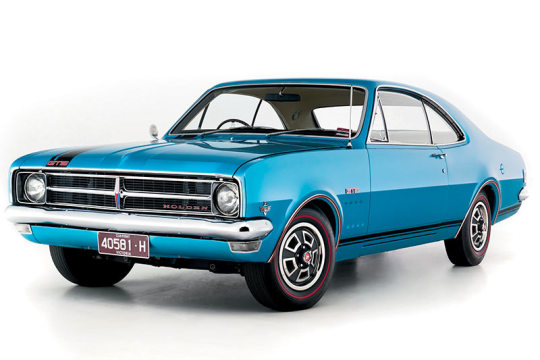
New Post has been published on https://fastmusclecar.com/5-of-the-best-australian-muscle-cars-ever-built/best-muscle-cars/
5 Of The Best Australian Muscle Cars Ever Built
While American muscle cars usually command the spotlight in terms of V8 vehicles, Australia also has its fair share of classics. We will delve into five of these classic vehicles which have stood the test of time. All of these vehicles are being shortlisted from a balance of collectability, performance, and general reputation.
1. Holden Monaro
The Holden Monaro is a legendary nameplate in the world of Australian muscle cars. Originally introduced in 1968, the Monaro quickly gained a reputation for its sleek design and formidable performance on the road and the racetrack. With powerful V8 engines under the hood and a timeless coupe silhouette, the Monaro captured the hearts of car enthusiasts across generations. Its iconic status was cemented with the release of modern iterations, including the Monaro VZ and the limited-edition Monaro CV8-Z.
2. Ford Falcon GT
The Ford Falcon GT is possibly the first Australian muscle car, depending on who you ask. The initial XR GT performance version housed a 4.7-liter, 289 ci V8 engine, with 68 and 71 eras having a 5.8-liter, 351 Cleveland V8 producing 300-350hp. The first Aussie-made version was the 1972 XA Falcon which came as a two-door coupe, with a top speed of 142 mph and a 0-60 time of 6.4 seconds. Over the years, the Falcon GT has evolved to become a symbol of Australian performance engineering, with each new generation pushing the boundaries of power and innovation. Models like the Falcon GT-HO Phase III have achieved legendary status among collectors and enthusiasts, Adding to the Falcon GT’s status.
3. Chrysler Valiant Charger
The Chrysler Valiant Charger was based on the Dodge Dart and Plymouth Valiant, but entirely Australian-made. With its long hood, short deck, and aggressive styling cues, the Valiant Charger stood out from the crowd and became a symbol of rebellion and freedom on the open road. Standout versions include the RT model with a 4.3-liter, 265 ci Hemi 6, producing 302 hp, with a 0 to 60 time of 6 seconds. For those wanting more luxury, the Charger 770 SE came with a 5.6-liter, 340-ci V8 and 275hp, Today, well-preserved Charger models are highly sought after by collectors, with the early 70s models being the most desirable.
4. HSV GTSR W1
Developed by Holden Special Vehicles (HSV), the HSV GTSR W1 is a limited-edition super sedan that pays homage to the classic muscle cars of yesteryear while incorporating the latest in automotive technology. With a supercharged V8 engine producing over 600 horsepower, advanced aerodynamics, and track-tuned suspension, the GTSR W1 is capable of tearing up the track with ease. Its aggressive styling and menacing presence make it an instant classic, destined to be remembered as one of the greatest Australian muscle cars.
5. Holden Sandman
American Australia had similar problems in the early 1970s. Huge distances to cover, while needing a vehicle to haul a decent amount of daily items. America solved a problem with the Chevrolet El Camino and the Ford Ranchero, while Australia came up with the ‘Ute.’ A regular muscle car upfront with a van at the back. The top version of the Sandman came with a 5.0-liter 308 engine, with a top speed of 125 mph. Standout features include the radial tuned suspension – leaf springs in the rear, coil springs for the front wheels to address the radial tires.
3 notes
·
View notes
Text

In 1951, Ford built the Cleveland Engine plant, which was the first Ford engine plant in Ohio. The plant was the center of production for Ford's first overhead valve engine, the Lincoln V8.
0 notes
Text
FEATURE - BOOSTED MAV Richard Tally 1970 Ford Maverick
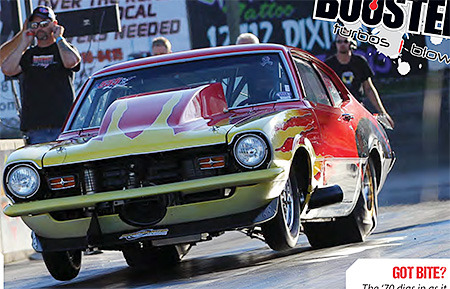
A BLAST FROM THE PAST....PAST FEATURE FROM RPM MAGAZINE “My wife was afraid I was going to crash and kill myself,” shared Kentucky native Richard Talley. Quite simply, that in a nutshell, is how Talley—a former wheelman of a turbo Hayabusa 4-wheeler—found himself shopping for a new set of wheels. “My wife wished I would get a car because it would be safer. Ok, no argument there,” he exclaims with a chuckle. “It was getting a bit old traveling around to the different county fairs every weekend and being out until the late hours anyway. Doing something local would be great. I had always wanted to build a car, and now I had the green light to do it,” explains Talley. Now, instead of piloting a quad, Talley turns heads with his brightly colored 1970 Ford Maverick. And you’ll hear it before you see it, as force-feeding the big block Ford engine that Talley has under the hood is a shiny whistlin’ ProCharger. Pretty much music to the ears.“I drove an ugly orange Maverick for a few years in high school and for a while after. It was a six-cylinder with an automatic. I always thought it would be cool with a big V8, like they were doing with the Vegas back then,” Talley reminisced. “I had joined the Army right after high school, and while I was in the service, I had a couple of Fox bodies—an ’82 GT, which was my first real car I bought on my own, and an ’85 GT. So you could say I’m a bit of a Mustang nut.” When Talley began his hunt for a door-car, he originally started searching for another Mustang when low and behold, a Maverick popped up, thanks to a mislabeled title. “So, then, I got thinking, ‘I like different. I want to do something different.’ So, I searched for Mavericks, and found this one in Cleveland, Ohio. ” Richard’s Maverick was an eBay find. Although Talley purchased the 1970 Ford as a roller, the car had previously housed a small block Chevy powerplant. The purists will be happy that Talley did not follow the same path, as he wasted no time and dropped a 529 cubic inch big block Ford into the Maverick with a C6 behind it. Read more of this article. Just click on the digital feature below this introduction. Read more stories like this at www.rpmmag.com Read the full article
0 notes
Text


Ford Falcon XA GT 351 Hardtop, 1972. Also powered by Ford's Cleveland V8 that was imported for the US for the otherwise all-Australian Falcon. In the XA GT it made 300hp. The Cleveland-powered GT only made through one further generation, the XB, before it was discontinued.
#Ford#Ford Falcon#Ford Falcon GT#Ford Falcon GT 351#Ford Falcon XA GT 351 Hardtop#1972#Cleveland V8#351ci V8#1970s#pillarless hardtop#Ford V8
208 notes
·
View notes
Text
Among all the wild custom cars of automotive history, few stand out like Billy Gibbons’ 1933 Ford Eliminator. Chopped, channeled, and vividly adorned, this iconic hot rod famously appeared on the cover of ZZ Top’s 1983 album Eliminator. The coupe instantly became engrained as an essential part of the band's mythos. This article will explore the origins and customization of this singular Ford, its rise to fame, later history, and lasting legacy as a cornerstone custom. Overview of the Iconic 1933 Ford Eliminator Built as a stylized 1933 Ford coupe, the Eliminator boasts a radical chopped top, channeled body, and loud custom paint scheme. Extensive modifications carried out by Billy Gibbons sought to create the ultimate hot rod. This personalized coupe first reached the limelight appearing on the cover artwork of ZZ Top’s hit 1983 album Eliminator. The car grew inseparable from the band's bluesy rock vibes and Texas roots. Let's examine the customization and backstory behind this machine that left an indelible mark on hot rodding culture. Customization by ZZ Top's Billy Gibbons Long before his music career, Billy Gibbons expressed his creative instincts through custom cars. The Eliminator coupe represented his vision for the ultimate hot rod. Extensive Body Modifications To achieve a rakish profile, Gibbons applied: 3-inch chop reducing roof height 5-inch drop in total vehicle height Smoothed body panels Frenched headlights and taillights Shaved door handles and emblems These touches gave the Ford a coiled, ready-to-pounce stance. Wild Custom Paint Scheme Vibrant paint added to the aggressiveness: Deep metallic blue base coat Silver flames on hood, roof, trunk Silver side spears flanking windows Silver lower body accent stripe The loud paint echoed hot rod culture. Powerful Chevrolet Engine Swap Giving the Eliminator forceful performance: ZZ383 crate V8 engine from Chevy 383 cubic inches (6.3 liters) Up to 415 horsepower 4-barrel carburetor This modernized the powertrain for brutal acceleration. Gibbons invested huge effort perfecting his ideal hot rod vision. Rise to Fame as ZZ Top's Eliminator Car With customs completed by 1982, the Eliminator soon gained fame as part of ZZ Top's music. Featured on Eliminator Album Cover The car debuted globally on the cover of: 1983 album Eliminator ZZ Top's commercial breakthrough Multi-platinum success This put the hot rod in front of millions of fans. Starred in Music Videos Furthering its image, the Eliminator coupe appeared in: "Gimme All Your Lovin'" music video "Sharp Dressed Man" video "Legs" music video It became forever linked to ZZ Top's signature songs. Instantly Recognizable Hot Rod Through the album artwork and music videos, the radically modified Eliminator coupe: Symbolized ZZ Top's Texas roots Epitomized no-limits hot rodding Distilled the band's style into one car It was now an iconic custom completing ZZ Top's outlaw mystique. Later History of the Famed Eliminator In 1986, the beloved Eliminator coupe was donated to the Rock and Roll Hall of Fame Museum in Cleveland, Ohio, recognizable to millions of visitors. It remained on display until August 2020, when Gibbons recovered the car to add to his collection of special vehicles. While the Eliminator had massive cultural impact, Gibbons could not permanently part with his seminal customized coupe. Nearly 40 years since its modification, this singular Ford remains a cornerstone car that transcends hot rodding into pop culture celebrity. Other Custom Cars Built by Billy Gibbons While the Eliminator stands supreme, Billy Gibbons maintained his lifelong passion for radical customs: CadZZilla - 1948 Cadillac Coupe Built with hot rod legend Boyd Coddington, based on a Series 62 Cadillac shortened 3 feet. Powered by a 550 hp Cadillac V8. Decked in vivid blue metal flake paint.
Won the Ridler Award in 1989 as the most outstanding custom. 1950 Ford Business Coupe "Kopperhed" Gibbons' personalized coupe with psychedelic red paint, flames, and comic art by Bay Area graffiti artist Dave "Dizzle" Kemnitzer. Powered by a Ford 351 Windsor V8. Exploration '59 Gibson A bright pink custom 1959 Gibson Explorer guitar-shaped hot rod based on a Lincoln Mark VII chassis. Built for Gibbons by Garage Company customs. Gibbons never relented expressing his creative vision through wild customs like the game-changing Eliminator. Legacy of the Eliminator Coupe The 1933 Ford Eliminator secured its place in hot rod history through: Quintessential Hot Rod Representing the excess and self-expression epitomized by radical customs. The audacious chopped body, flame paint job and powerful V8 perfectly captured this spirit. ZZ Top's Automotive Image Becoming the vehicle visually associated with ZZ Top as much as the band's beards and sunglasses. The coupe distilled their larger-than-life Texas rock vibes. Inspiring Future Customizers Joining a select group of customs like the Hirohata Merc that influenced generations of hot rodders to build boldly and defy conformity. Like the music it accompanied, the Eliminator coupe made an artistic statement about outrageous style and passion that still resonates today. This singular hot rod remains a crown jewel of Billy Gibbons' extensive automotive legacy. More than just transportation, the Eliminator exemplifies imagination brought to life on four wheels. FAQs What year and model was the original ZZ Top car? The original ZZ Top car was a 1933 Ford Coupe, which was customized by Billy Gibbons and his team in the early 1980s. Where is the Eliminator coupe now? The original ZZ Top Ford Coupe, also known as the Eliminator coupe, is now housed at the Cleveland Rock and Roll Hall of Fame. How many custom cars does Billy Gibbons own? Billy Gibbons, the lead singer of ZZ Top, is known for his extensive collection of custom cars. While the exact number is not clear, he is estimated to own dozens of hot rods and custom vehicles. What ZZ Top songs featured the Eliminator car? The Eliminator car was featured prominently in several ZZ Top music videos, including "Gimme All Your Lovin'," "Sharp Dressed Man," and "Legs." Why did Billy Gibbons have the coupe customized? Billy Gibbons had the coupe customized to reflect his personal style and love of hot rods. The car became a symbol of ZZ Top's music and image, and helped to popularize hot rods and custom cars in the mainstream. #Wiack #Car #CarInsurance #CarRental #CarPrice #AutoLoans
0 notes
Text
Among all the wild custom cars of automotive history, few stand out like Billy Gibbons’ 1933 Ford Eliminator. Chopped, channeled, and vividly adorned, this iconic hot rod famously appeared on the cover of ZZ Top’s 1983 album Eliminator. The coupe instantly became engrained as an essential part of the band's mythos. This article will explore the origins and customization of this singular Ford, its rise to fame, later history, and lasting legacy as a cornerstone custom. Overview of the Iconic 1933 Ford Eliminator Built as a stylized 1933 Ford coupe, the Eliminator boasts a radical chopped top, channeled body, and loud custom paint scheme. Extensive modifications carried out by Billy Gibbons sought to create the ultimate hot rod. This personalized coupe first reached the limelight appearing on the cover artwork of ZZ Top’s hit 1983 album Eliminator. The car grew inseparable from the band's bluesy rock vibes and Texas roots. Let's examine the customization and backstory behind this machine that left an indelible mark on hot rodding culture. Customization by ZZ Top's Billy Gibbons Long before his music career, Billy Gibbons expressed his creative instincts through custom cars. The Eliminator coupe represented his vision for the ultimate hot rod. Extensive Body Modifications To achieve a rakish profile, Gibbons applied: 3-inch chop reducing roof height 5-inch drop in total vehicle height Smoothed body panels Frenched headlights and taillights Shaved door handles and emblems These touches gave the Ford a coiled, ready-to-pounce stance. Wild Custom Paint Scheme Vibrant paint added to the aggressiveness: Deep metallic blue base coat Silver flames on hood, roof, trunk Silver side spears flanking windows Silver lower body accent stripe The loud paint echoed hot rod culture. Powerful Chevrolet Engine Swap Giving the Eliminator forceful performance: ZZ383 crate V8 engine from Chevy 383 cubic inches (6.3 liters) Up to 415 horsepower 4-barrel carburetor This modernized the powertrain for brutal acceleration. Gibbons invested huge effort perfecting his ideal hot rod vision. Rise to Fame as ZZ Top's Eliminator Car With customs completed by 1982, the Eliminator soon gained fame as part of ZZ Top's music. Featured on Eliminator Album Cover The car debuted globally on the cover of: 1983 album Eliminator ZZ Top's commercial breakthrough Multi-platinum success This put the hot rod in front of millions of fans. Starred in Music Videos Furthering its image, the Eliminator coupe appeared in: "Gimme All Your Lovin'" music video "Sharp Dressed Man" video "Legs" music video It became forever linked to ZZ Top's signature songs. Instantly Recognizable Hot Rod Through the album artwork and music videos, the radically modified Eliminator coupe: Symbolized ZZ Top's Texas roots Epitomized no-limits hot rodding Distilled the band's style into one car It was now an iconic custom completing ZZ Top's outlaw mystique. Later History of the Famed Eliminator In 1986, the beloved Eliminator coupe was donated to the Rock and Roll Hall of Fame Museum in Cleveland, Ohio, recognizable to millions of visitors. It remained on display until August 2020, when Gibbons recovered the car to add to his collection of special vehicles. While the Eliminator had massive cultural impact, Gibbons could not permanently part with his seminal customized coupe. Nearly 40 years since its modification, this singular Ford remains a cornerstone car that transcends hot rodding into pop culture celebrity. Other Custom Cars Built by Billy Gibbons While the Eliminator stands supreme, Billy Gibbons maintained his lifelong passion for radical customs: CadZZilla - 1948 Cadillac Coupe Built with hot rod legend Boyd Coddington, based on a Series 62 Cadillac shortened 3 feet. Powered by a 550 hp Cadillac V8. Decked in vivid blue metal flake paint.
Won the Ridler Award in 1989 as the most outstanding custom. 1950 Ford Business Coupe "Kopperhed" Gibbons' personalized coupe with psychedelic red paint, flames, and comic art by Bay Area graffiti artist Dave "Dizzle" Kemnitzer. Powered by a Ford 351 Windsor V8. Exploration '59 Gibson A bright pink custom 1959 Gibson Explorer guitar-shaped hot rod based on a Lincoln Mark VII chassis. Built for Gibbons by Garage Company customs. Gibbons never relented expressing his creative vision through wild customs like the game-changing Eliminator. Legacy of the Eliminator Coupe The 1933 Ford Eliminator secured its place in hot rod history through: Quintessential Hot Rod Representing the excess and self-expression epitomized by radical customs. The audacious chopped body, flame paint job and powerful V8 perfectly captured this spirit. ZZ Top's Automotive Image Becoming the vehicle visually associated with ZZ Top as much as the band's beards and sunglasses. The coupe distilled their larger-than-life Texas rock vibes. Inspiring Future Customizers Joining a select group of customs like the Hirohata Merc that influenced generations of hot rodders to build boldly and defy conformity. Like the music it accompanied, the Eliminator coupe made an artistic statement about outrageous style and passion that still resonates today. This singular hot rod remains a crown jewel of Billy Gibbons' extensive automotive legacy. More than just transportation, the Eliminator exemplifies imagination brought to life on four wheels. FAQs What year and model was the original ZZ Top car? The original ZZ Top car was a 1933 Ford Coupe, which was customized by Billy Gibbons and his team in the early 1980s. Where is the Eliminator coupe now? The original ZZ Top Ford Coupe, also known as the Eliminator coupe, is now housed at the Cleveland Rock and Roll Hall of Fame. How many custom cars does Billy Gibbons own? Billy Gibbons, the lead singer of ZZ Top, is known for his extensive collection of custom cars. While the exact number is not clear, he is estimated to own dozens of hot rods and custom vehicles. What ZZ Top songs featured the Eliminator car? The Eliminator car was featured prominently in several ZZ Top music videos, including "Gimme All Your Lovin'," "Sharp Dressed Man," and "Legs." Why did Billy Gibbons have the coupe customized? Billy Gibbons had the coupe customized to reflect his personal style and love of hot rods. The car became a symbol of ZZ Top's music and image, and helped to popularize hot rods and custom cars in the mainstream. #Wiack #Car #CarInsurance #CarRental #CarPrice #AutoLoans
0 notes
Text

The XB Ford Falcon GT was Introduced in September 1973 and phased out in June 1976. The XB GT received a minor facelift over the XA model it replaced which included a restyled front grille and apron and colour coded bumpers. The 5.8 Litre 351ci Cleveland V8 was redeveloped and manufactured in Australia as Ford Australia initially relied on imported Cleveland Factory blocks until Geelong Factory blocks took over in 1976. The engine output remained the same as the XA GT which was 300bhp/380lb-ft (224kw/515nm) mated to an all-synchronised four speed manual or a three speed FMX automatic. Four wheel disc brakes became standard fitment on the XB Falcon GT, and it was the last "Official" GT until the release of the EB II 25th Anniversary Falcon GT in 1992. The XB Ford Falcon was also available in a GS model , which was known as the Grand Rally Sports pack option, which featured striping, GS insignia and GT instrumentation. Options available were, bonnet scoops, four wheel disc brakes, driving lights and bonnet locks among others.Total XB Ford Falcon GTs produced: 1950 Sedans, and 949 two door Hardtops.Price when new for a 1975 XB Ford Falcon GT four door sedan 5.8 Litre 351ci V8 four speed manual: $7,702.00
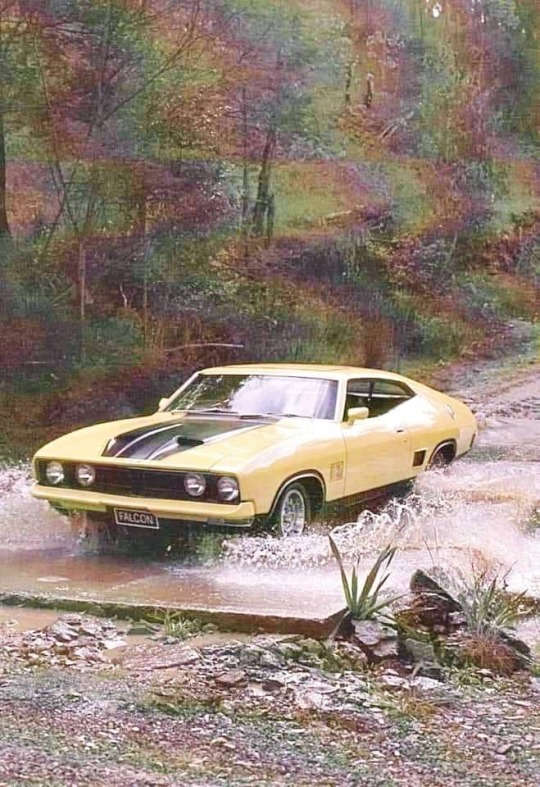
#falcon gt#falcon#ford#XBGT#XB#XB falcon#gt#gt falcon#ford gt#muscle car#muscle cars#musclecar#musclecars#muscle#australian muscle#classic#classic car#kustom kulture#kustomblr#kustom#custom#custom car#car#cars#bathurst#touring car#racecar
180 notes
·
View notes
Text
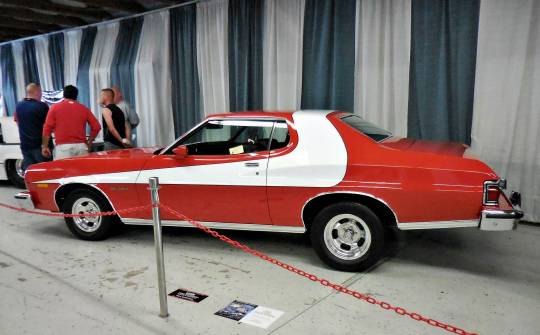

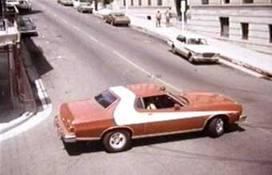

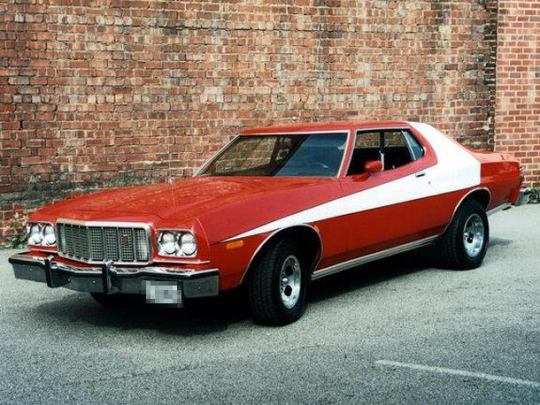
1976 Ford Gran Torino
Starsky and Hutch 1975-76 Ford Gran Torino Starsky and Hutch was a television cop show created by William Blinn and played between 1975 and 1979 on ABC. The show featured two California policemen, the dark-haired David Starsky (Paul Michael Glaser) playing the driver and the blond Ken 'Hutch' Hutchinson (David Soul). Their radio handle was "ZEBRA-3" and their street car was an eye catching tomato red, 1975-76 Ford Gran Torino automobile with a wide white stripe.
Ford Gran Torino Details •Year: 1975-76 •Make & Model: Ford Gran Torino •Engine: 351 c.i. Cleveland V-8 rated at 250 hp (400 c.i. and 460 c.i. V8s were optional and also used) •Carburetor: Four barrel carb •Transmission: XPL type C-6 Automatic Transmission •Wheels: Magnum 500 with HR78 x 14/B Radial Firestone Tires •Color: Bright Red (2B) •Other Notables: Black vinyl interior with white trim, color-keyed sport mirrors, AM-FM radio with 8-Track, heavy duty suspension, air shocks on the rear end, special stripe, sport steering wheel, bumper protection and manual air conditioning.
#Ford Gran Torino#car#cars#muscle car#american muscle#ford#gran torino#starsky and hutch#paul michael glaser#david soul#movie cars#tv cars
76 notes
·
View notes